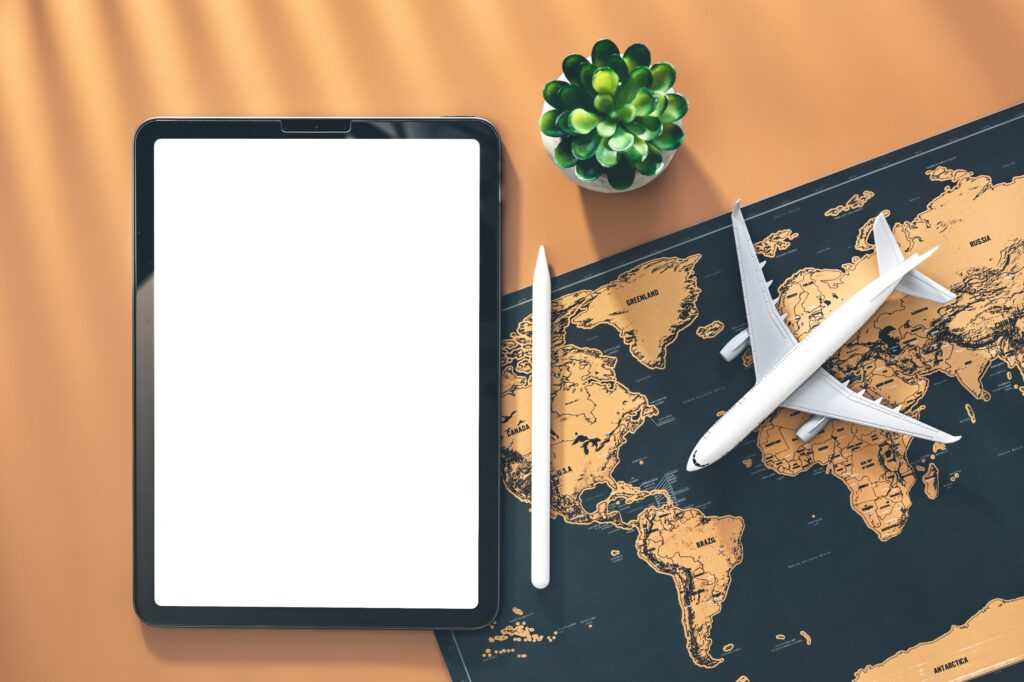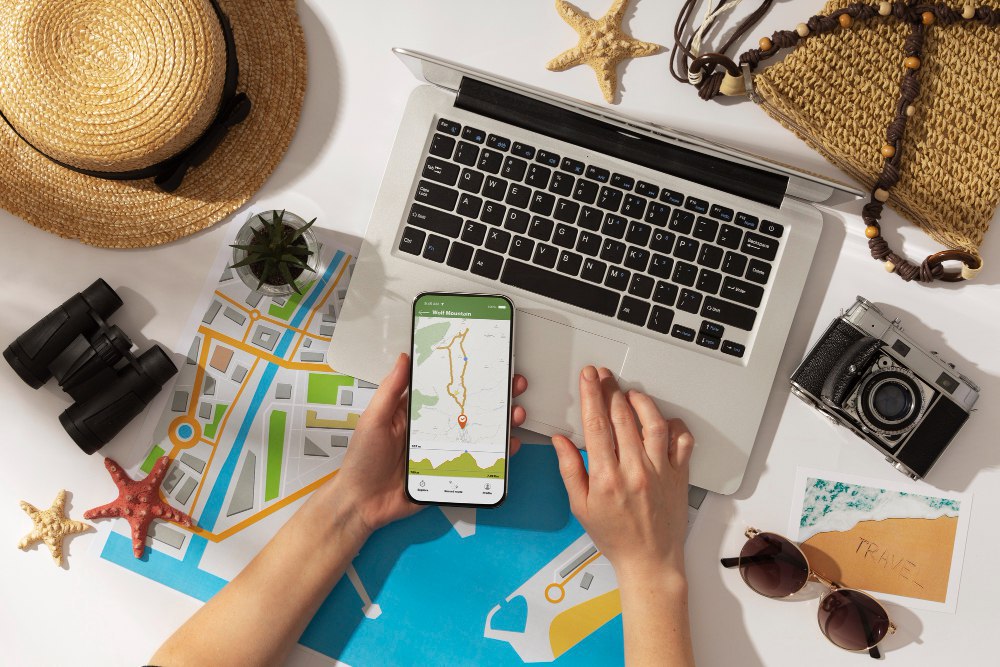In this fast-paced digital age, planning a trip has become more convenient and efficient than ever before, thanks to the emergence of AI-powered trip planners. Gone are the days of flipping through travel guides and spending hours searching for the perfect hotel or restaurant. With the advent of trip planner AI technology, you can streamline the entire process, ensuring that your vacation is not just memorable but also stress-free.
In this comprehensive guide, we’ll walk you through the step-by-step process of planning your trip using AI tools. Whether you’re a seasoned traveler or a newbie explorer, these AI trip planners can make your journey smoother and more enjoyable. Let’s dive into the world of trip planner AI, and discover how it can transform the way you plan your next adventure.

1. Define Your Destination and Preferences
The first step in planning your trip using AI tools is to clearly define your destination and preferences. Are you dreaming of a relaxing beach vacation, an adventurous trek in the mountains, or a cultural exploration in a vibrant city? Be specific about your interests and expectations for the trip.
Trip planner AI comes into play here by helping you narrow down your options. Websites and apps like Google Trips and Kayak’s Explore feature can analyze your past travel data and preferences to suggest destinations that align with your interests. These AI trip planners utilize machine learning algorithms to understand your travel patterns and make personalized recommendations.
For more insights on tourism’s future and the emergence of AI travel planner, check out our article: AI Travel Planner: Future of Tourism.
2. Set Your Budget with AI Trip Planners
Budgeting is a crucial aspect of trip planning, and AI trip planners can assist in this area too. Use tools like Expedia’s AI-powered travel agent to set your budget constraints and preferences. These AI algorithms can suggest flights, accommodations, and activities that fit your financial plan, ensuring that you don’t overspend on your trip.
Additionally, some AI trip planners can constantly monitor prices and notify you when they find a deal that matches your criteria, helping you secure the best value for your money.
3. Research and Gather Information
Once you’ve defined your destination and budget, it’s time to gather information about the place you’re visiting. AI-powered search engines, like Google, can help you discover the best time to visit, local attractions, and travel tips. Simply enter your destination and use keywords like “best time to visit [destination]” or “top attractions in [destination]” to access a wealth of information.
Furthermore, AI chatbots, such as ChatGPT Travel Assistant, can answer your specific travel-related questions and provide recommendations based on your preferences. These chatbots are available 24/7, ensuring you have access to valuable information at any time.

4. Plan Your Itinerary
Creating a detailed itinerary is a crucial step in trip planning, and AI trip planners excel in this area. Websites and apps like TripIt and Travefy can automatically generate a comprehensive itinerary by scanning your email for travel bookings and confirmation emails. They organize your flights, hotel reservations, and activities into a neatly structured plan, accessible through their platforms or mobile apps.
These AI tools can also provide suggestions for activities and attractions based on your interests and the duration of your stay, making it easy to fill your days with exciting experiences.
5. Book Accommodations and Transportation
Once your itinerary is set, it’s time to book accommodations and transportation. AI trip planners can simplify this process by aggregating options from various sources and presenting them in an organized manner. Apps like Hopper can predict flight prices and suggest the best time to book based on historical data and machine learning algorithms.
Similarly, platforms like Booking.com and Airbnb use AI to recommend accommodations that match your preferences, such as location, price range, and amenities. By leveraging these AI tools, you can quickly find the most suitable options and make reservations with confidence.
6. Pack Efficiently

Packing for a trip can be a daunting task, but AI can lend a helping hand here as well. Apps like PackPoint use AI algorithms to generate packing lists tailored to your destination, the weather forecast, and the activities you have planned. This ensures that you don’t forget any essential items and avoid over-packing.
Additionally, some AI-powered virtual assistants can offer packing advice based on your specific needs and the duration of your trip. Simply ask them, “What should I pack for my [destination] trip in [month]?” and receive personalized recommendations.
7. Navigate and Translate
AI trip planners also come in handy when you’re on the ground in a foreign country. AI language translation apps like Google Translate can help you communicate with locals, read signs, and understand menus in languages you may not be familiar with. These apps use neural machine translation and image recognition to provide accurate and real-time translations.
Moreover, AI-powered navigation apps like Waze and Google Maps can guide you through unfamiliar streets and traffic, helping you reach your destinations efficiently. They even offer real-time traffic updates and alternate routes to avoid congestion.

8. Capture and Share Memories
Documenting your trip is essential for creating lasting memories, and AI can enhance your photography and video recording skills. AI camera apps, such as Google Camera and Adobe Photoshop Camera, can automatically enhance your photos, adjust lighting, and remove unwanted objects to create stunning visuals.
Furthermore, AI-driven travel journals like Day One can help you chronicle your journey with text, photos, and location data. These journals can automatically organize your entries by date and location, making it easy to revisit your adventures in the future.
9. Stay Safe and Informed with AI Trip Planners
AI trip planners also contribute to your safety during your travels. Apps like Sitata use AI to provide real-time health and safety information, including disease outbreak alerts and travel advisories. They can help you stay informed about potential risks and take necessary precautions while you’re abroad.
Moreover, some AI-driven personal safety apps, like Moonlight, offer features that allow you to quickly call for emergency assistance or share your location with trusted contacts in case of an emergency.
10. Embrace the Future of Travel Planning
As you embark on your next adventure, remember that AI-powered trip planners are at the forefront of the travel industry’s evolution.
These tools are continually improving, incorporating new technologies and expanding their capabilities to provide travelers with even more personalized and efficient experiences. By embracing the future of travel planning, you can stay ahead of the curve and make the most out of your journeys.

Last Words
In today’s digital age, planning your trip using AI tools is not just a convenience; it’s a smart and efficient way to ensure a smooth and enjoyable travel experience. From defining your destination and budget to booking accommodations, navigating foreign streets, and capturing memories, trip planner AI has revolutionized the way we explore the world.
So, why not harnessing the power of AI trip planners for your next adventure? Start by defining your destination and preferences, set your budget, and use AI tools to research, plan, and book your trip. With the help of AI, you can make the most of your travel experiences while minimizing the stress and hassle associated with trip planning.
Have you ever used AI trip planners in your travel planning process? Share your experiences and tips in the comments below. We’d love to hear from you!





